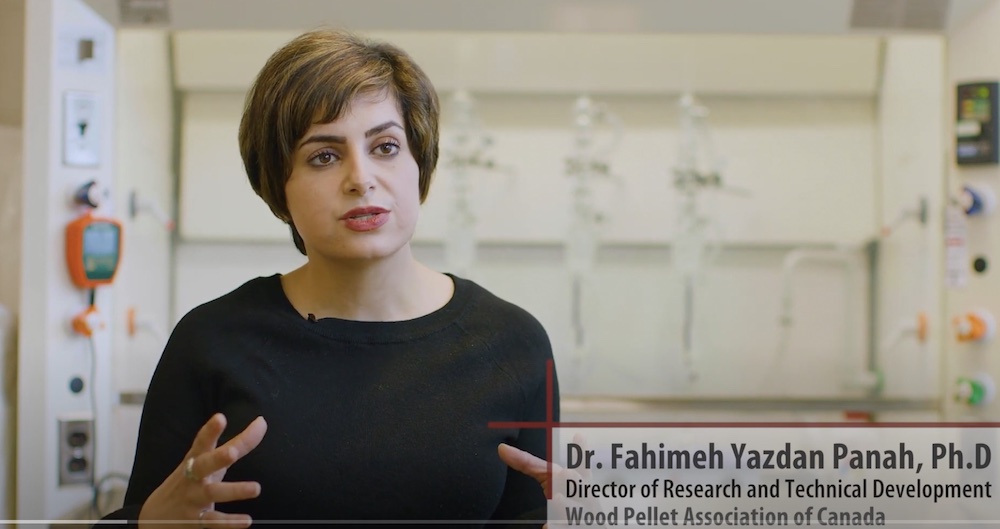Innovation in the Bioeconomy is one of five new videos in The Power of Pellets series, produced by the Wood Pellet Association of Canada (WPAC) with support from Forestry Innovation Investment. According to the esteemed researchers and featured professionals, biomass’ potential, both domestically and globally, in the transformation to a low carbon, clean and renewable world is almost limitless.
WPAC’s director of research and technical development, Fahimeh Yazdan Panah, Ph.D, explains: “The bioeconomy is really the sustainable production of renewable resources and the conversion of these renewable resources into higher value products such as food, bioenergy and other bio-based materials. These products offer a world of possibilities not only to meet the targets of greenhouse gas emissions, but also to opening doors to new and improved products.”
For the past 15 years, the Biomass and Bioenergy Research Group at the University of British Columbia, in collaboration with WPAC, has been conducting research and looking into developing technologies to store, process and convert lignocellulosic biomass to higher value products, not only to be used for heat and power generation, but also biochemicals, biomaterials and biofuels.
“If you look around your home,” emphasizes Yazdan Panah, “everything that is made out of plastic today could be made out of wood and look exactly the same.”
Executive director of the Forest Enhancement Society of BC, Steve Kozuki, registered professional forester, says one of the things that strikes pride in the wood pellet sector is that it’s been a catalyst for increasing the diversity of participation in B.C.’s forest economy, especially in the forest bioeconomy. “The foundation for allowing that to happen is the fact that we have a strong pellet sector right here in British Columbia.”
Shahab Sokhansanj, Ph.D, research leader, Biomass and Bioenergy Group, University of British Columbia states, “Wood pellets play a critical role in reduction of greenhouse gas emissions.”
“According to the Paris Agreement we really need to look at the contribution of solid biofuels and replacement [of] fossil fuels,” says Yazdan Panah who envisions the development of bioenergy carbon capture and storage (BECCS) domestically. “If Canada is really serious about its greenhouse gas emission targets, we will start looking at pellets as way to capture GHG emissions at the source, transport them and then bury them underground.”
Professor Gary Bull, Ph.D, Department of Forest Resources Management at the University of British Columbia concludes, “The opportunities for using wood pellets right here at home and around the world are basically limitless.”
Watch the video below:
This article was originally published by Canadian Biomass, a national media brand providing coverage of the emerging biomass, bioenergy and bio-products markets. See CanadianBiomassMagazine.ca for more information.

